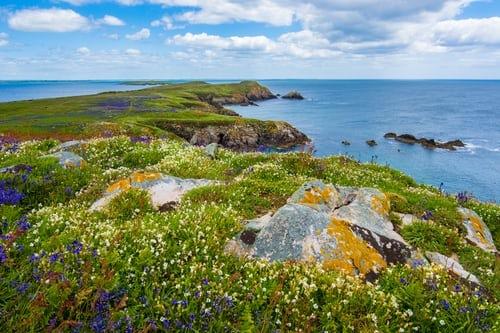
Why Ireland is divided?
The complicated and turbulent history between London and Dublin began with the first Cambrian-Norman intervention in Ireland in 1167 and was consolidated when the then King Henry II of England landed with a large army in 1171.
Consequently, much of the island became a manor ruled by the British monarchy and later a Kingdom that was a client state of London.
Finally, in 1800 the United Kingdom of Great Britain and Ireland was founded, following the approval of the Act of Union by the Irish Parliament, in Dublin.
But from its inception and throughout the 19th century, there was strong opposition in Ireland that gradually morphed into a violent insurrection.
There were even sterile attempts to reestablish the Kingdom of Ireland.
The fight for more autonomy
In this context, at the end of the century, the "Home Rule" ( self-government ) movement was born, which advocated for more autonomy and the creation of an Irish parliament within the United Kingdom, for internal affairs, while imperial affairs would continue to be dealt with in Westminster, London.
United Kingdom of Great Britain and Ireland was founded in 1800.
Niamh Gallagher, a professor of modern British and Irish history at the University of Cambridge, points out that the leaders of the "Home Rule" movement were not demanding independence.
"They asked for a degree of devolution (of powers) within the United Kingdom. A bit like what Scotland or Wales have today," he tells BBC Mundo.
But there were also Irish nationalists, mainly Catholics, who wanted to completely separate from the UK.
On the other end of the political spectrum were the Unionists, mostly Protestant, living mainly in the northeast of Ireland.
They were loyal to the British crown and feared becoming a minority in an independent Ireland.
In the 1870s, more and more British politicians believed that Ireland should have a greater voice in its internal affairs.
And leaders, such as former British Prime Minister William Gladstone, supported the creation of an " autonomous government " in Ireland and tried, unsuccessfully, to pass laws to give it more autonomy.
Militia formation
However, the general election of 1910 changed the political landscape: Irish nationalists won the majority of the seats in Ireland.
El 1 de septiembre de 1912, los unionistas de Úlster salieron a las calles a protestar en contra del tercer proyecto del ley de autonomía de 1912 presentado por el primer ministro británico Herbert Asquith.
On September 1, 1912, the Unionists of Ulster took to the streets to protest against the third draft of the autonomy law of 1912 presented by British Prime Minister Herbert Asquith.
It was a vote that served to put more pressure on London and demand that some powers be restored to them.
This is how the then Prime Minister Herbert Asquith presented the third bill of autonomy law of 1912, whose signature was delayed until 1914 and then suspended after the outbreak of the First World War.
Horrified at the bill that would alienate them from London, the unionists immediately signed a petition in protest and founded the Ulster Volunteers, a militia whose goal was to block national self-government in Ireland.
By January 1913, the Ulster Volunteers numbered nearly 100,000 members and had managed to smuggle tens of thousands of rifles from Germany to Ulster, a historic province in northern Ireland.
Northern Ireland: the steel and concrete walls that separate Catholics and Protestants in the 21st century
Observing what was happening in Ulster, a group of nationalists prepared to defend self-government and founded the Irish Volunteers paramilitary organization that same year, which was also armed.
Tensions rose between Nationalists and Unionists to such an extent that Ireland was on the brink of civil war.
A partition "marked by two ends"
But on the eve of the entry into force of the controversial pact, a bloody civil war broke out that pitted the forces of the provisional government, which supported the treaty, and the IRA, which rejected it.
The clashes lasted until 1923 and left thousands of deaths and deep wounds in the societies on both sides of the Northern Irish border.
Finally, in 1937 the Constitution of Ireland was drawn up, which founded the Republic that we know today.
The BBC Northern Ireland journalist Catherine Morrison believes that the partition of Ireland and the creation of Northern Ireland 100 years ago were marked by two extremes.
Un sacerdote agita un pañuelo manchado de sangre mientras cuatro hombres llevan a un hombre herido y ensangrentado por las calles de Londonderry durante The Troubles.
Caption,
"The Troubles" was a bloody and traumatic conflict between unionists and nationalists that lasted 30 years.
"On the one hand, 1921 was a year of great political scenes, speeches, pomp, and ceremony. Far from all that, ordinary people in the new state of Northern Ireland lived their lives in a context of latent violence," he explains.
And from 1922 on, that violence turned into "an uncomfortable peace."
"But sectarian unrest would be a dangerous feature of Northern Ireland for decades to come," he adds.
#whyirelandisdivided
#irelanddivided
#irelandfact
- Comments (1)
- Recommended
- Milestones


Here are your recommended items...
Here are your milestones...






